Since it is my job to observe the sky with a telescope on a regular basis, I definitely qualify to explain these facts. As said before, anyone with an understanding of astronomy knows that a flat earth is simply not possible given what we can observe.
There are a lot of flat earthers who don’t like it when people like me use the stars and sky observations… claiming that I should be looking at the earth instead. The reason why they say this is because they know they cannot debunk the major talking points I’ll go through in this article, or will change the subject, or try and pull an asinine claim out of their top hats to try and combat it.
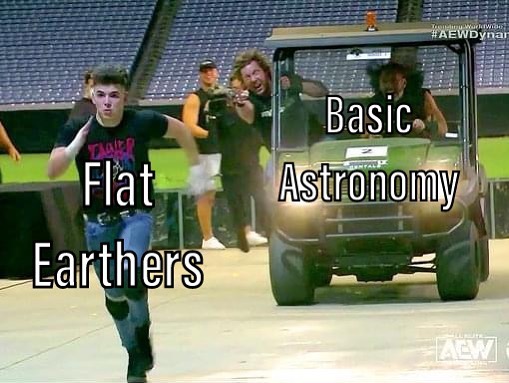
This article is long, so there are three major sections: Polaris, the Southern Stars, plus Telescopes and celestial navigation with them. In each section, I will address what flat earthers commonly claim in their arguments that they think proves a flat stationary earth under a rotating sky.
Polaris
Flat Earth Claim: Polaris is Stationary In the Sky While Everything Else Moves Around It
Fact: Our North Star is NOT fully stationary! Polaris is within a degree from the true North Celestial Pole (NCP). Because of this, it actually does move slightly around the NCP but it’s hard to tell at first. For most of North America on any given night between dusk till dawn, Polaris will actually start and end on opposite sides of the pole.
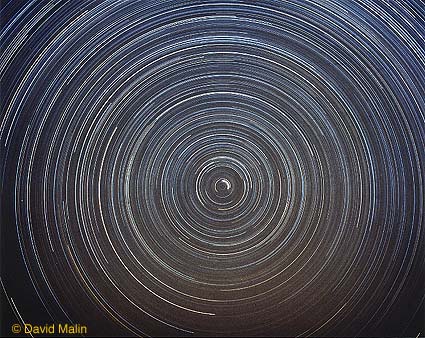

Show Us Proof!: This is easy to show, and anyone with a DSLR can do this! Take a 15-30 minute long exposure of the northern sky at night without any tracking. After that amount of time, you see the exposure star trails, and if you look close enough, you can see that Polaris (the bright star at the middle) actually does leave a trail! This would not happen if it was perfectly stationary!

The picture above is one that yours truly took, and this is 30 minutes of raw exposure! If you look at Polaris closely, you can see it’s not perfectly center after 30 minutes of exposure!

If you want to try this, to keep your camera exposing for that long, make sure you set your F/stop to a high number, like f/15 or higher to make the light accumulate much slower and not overexpose the shot.
Flat Earth Claim: Polaris has Always Been Our North Star
Fact: No it has not! It has only been considered the pole star since the renaissance period. There is in fact a 26,000 year cycle where the actual pole shifts and appears to circle in the sky. We call this “precession of the equinoxes.” You can read more about it here, but this essentially means the NCP will move closer to Polaris until the year 2100, after that it will move away and by 3000 AD, Polaris won’t be considered the North Star anymore.
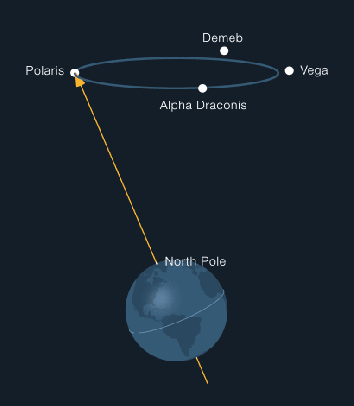

Show Us Proof!: Over the past few millennia, the existence of different pole stars and precession shift has been observed and recorded. Here are prime examples:
- Ancient Egyptians believed that the NCP section was “heaven” and designed their pyramids to align true north, and attempted to align a vent from the tomb to the north star, keeping it visible inside. The vents weren’t pointed at Polaris, they were aligned with Thuban, which was the north pole star during that time.
- Greek Navigator Pytheas described the NCP as “devoid of stars” in 330 BC, thus the stars of Ursa Minor, including Polaris would have appeared to circle around an “empty pole.” Throughout the time of Ancient Greece and the Roman Empire, it was the entire Ursa Minor constellation that was used for navigation, not Polaris.
- Ptolemy cataloged 48 constellations that were visible from Alexandria, Egypt during the second century AD; this included the stars that make up Crux – which then was still visible for a few hours over the southern sky. But by the time of the renaissance period, no star from Crux rose in the skies over Alexandria nor anywhere north of 31°11′ N Latitude.
- Observers during the renaissance period recorded that Polaris was still several degrees from the NCP. In fact, It wasn’t until this period when Polaris was given its common name.
- Nautical Almanacs, which are made for the sole purpose of celestial navigation at sea, have been recording the positions of the Sun, Moon, Stars, and Planets each year since the 18th century. The data is readily available and they show the small shift over the past two centuries!
Just because a human doesn’t see the precession shift happen in their lifetime doesn’t mean that it’s fake or has been made up in recent years.
The Southern Hemisphere and Celestial Sphere
Flat Earth Claim: There is no “South Star” or Southern Celestial Pole
Fact: Yes, there is no current “South Star” that is used for navigation, therefore no South Celestial Pole (SCP) right?

WRONG! Astronomers still observe TWO POLES, one visible over the northern hemisphere, and one visible over the southern hemisphere. Sigma Octantis, the closest star to the SCP, is too dim to be used for navigation; but we can still observe the stars to move around the SCP.

There simply cannot be two celestial poles in a two dimensional sky! Again, you can find countless long exposures and time lapses that show the motion of the stars moving around the SCP.
Show us Proof!: If you travel north, for every 69.169 miles you go, Polaris will shift one full degree higher in the sky and vice versa going south. But after you travel south of Earth’s equator, then you cannot see Polaris at all. Not only that, the stars in the southern sky appear to move around the SCP in the opposite direction (clockwise versus the stars going counterclockwise around the NCP).
That same region in the sky, where the constellation Octans is, rises higher the further south you go. It’s not a very bright constellation, and while the star Sigma Octantis is technically the “south star” being a degree away from the SCP, it’s not bright enough for practical navigation. However, you can see in the looping image blow that certain stars don’t set, and some objects that do like the Magellanic clouds will appear to rise again soon after setting.
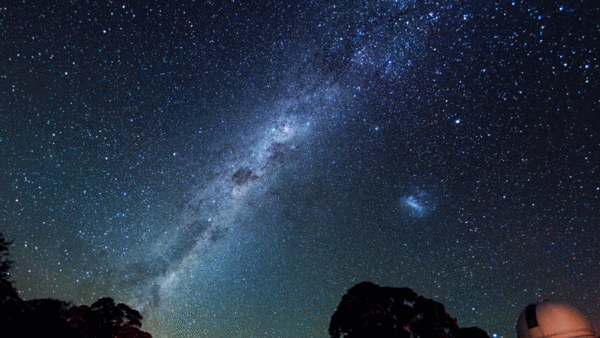
A good demonstration you can do is simply swing your arms in a forward circular motion – from your perspective you see one arm moving counterclockwise while the other moving clockwise, butt in reality, they are both moving and circling in the same direction! This can ONLY be possible if Earth was a three dimensional object under a three dimensional sky that circles a full 360 degrees!
Flat Earth Claim: The Southern Stars Are Just Perspective
Fact: The claim of “forced perspective” is the easy way out for flat earthers who acknowledge everything that as been discussed above but still don’t see it as proof of a spherical earth. There are things that “forced perspective” wouldn’t account for!
Show Us Proof!: Perspective would not explain why there appear to be stars and constellations that are circumpolar – meaning they always appear to move around a pole and never set. Sure, it’s easy to claim “perspective” from the northern hemisphere, as that fits nearly all flat earth models; but then why would stars like Alpha and Beta Centauri, Achernar, and the entire Southern Cross appear circumpolar (appear to never set) over places like New Zealand and the southern tip of South America?
Even if flat earthers will try to acknowledge that a SCP is observed over the southern hemisphere, their claims of “perspective” still wouldn’t work! For example, over a flat earth if someone in New Zealand or Australia was currently observing the SCP directly south from their location, then someone in South Africa wouldn’t see the SCP directly south at the same time, they’d see it to the east.

And don’t get me started on their dumb asinine claims of everyone having “their own personal dome” to account for why people in the southern hemisphere would see the same stars when looking due south when they’re supposed to be facing different directions depending on their longitude.
Sydney, Johannesburg, Jakarta, Pape’ete, and Santiago are on five different sides of the southern hemisphere, and over a flat earth, their due south would be in five different directions radiating out from the terrestrial north pole – where on that location, any direction you go in a straight line is moving south!
But we know that at any given time every observer in the southern hemisphere sees the SCP due south over their location no matter where they are! That can ONLY be possible if the Southern Hemisphere was the southern half of a spinning globe.
There is NO WAY around this! There is NO WAY a flat earther can explain the reality of the SCP’s position over the Southern Hemisphere sky… which is why flat earthers often try to dodge this subject – they know they cannot explain how it would work over a flat pizza land!
Telescopes and Celestial Navigation
Flat Earth Claim: Telescopes reveal the “truth” that stars and “wandering stars” are in fact just pretty watery lights in the heavens… and not distant worlds.
I’ve seen several videos circulating around where people try to record video footage of stars with either a high telephoto zoom lens like on a Nikon P900, or with actual telescopes. Instead of showing stars as distant points of light, you see them as these round, turbulent discs that look like they’re under water.
But then they do the same thing for planets too?!
FACT: THE OBJECTS SEEN THOSE VIDEOS ARE NOT FOCUSED PROPERLY!
In the video above, the user with the P900 is forgetting to adjust the focus on the lens, whether that’s on purpose or negligence I do not know.
Once the magnification is set, twisting the focus knob doesn’t increase your “zoom” while using a telephoto lens or a telescope, it moves your lens to the proper focal plane where the light comes properly into focus, and thus you can resolve the image. Your ability to zoom has everything to do with the optics involved and the properties of light entering your objective and into your eyes or camera sensors, and resolving at the proper focal distance.
When stars are properly focused, they will always appear as sharp points of light. It won’t matter how much I try to “zoom in” with different focal lengths to make the star bigger, they will never be seen as sharp discs! Why do they look watery in those videos? because of our atmospheric turbulence!
When planets are properly focused, they DO appear as tiny discs of varying sizes depending on their actual size and distance from us.
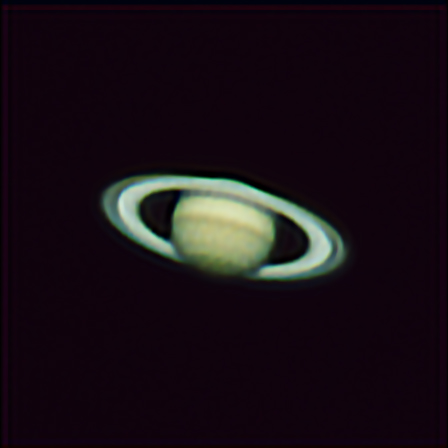
- Saturn’s rings are obvious even at low magnification, and the tilt of the rings changes appearance over time. You can see shadows casted on, and casted by Saturn’s rings!


- Jupiter’s cloud tops are visible, the Great Red Spot can be seen to move across Jupiter’s disc, and its four Galilean moons can also be seen to change position over time as they orbit the host planet.

- Jupiter’s moons can cast visible shadows on the planet itself, and these shadows move as the respective moon moves in orbit around Jupiter.

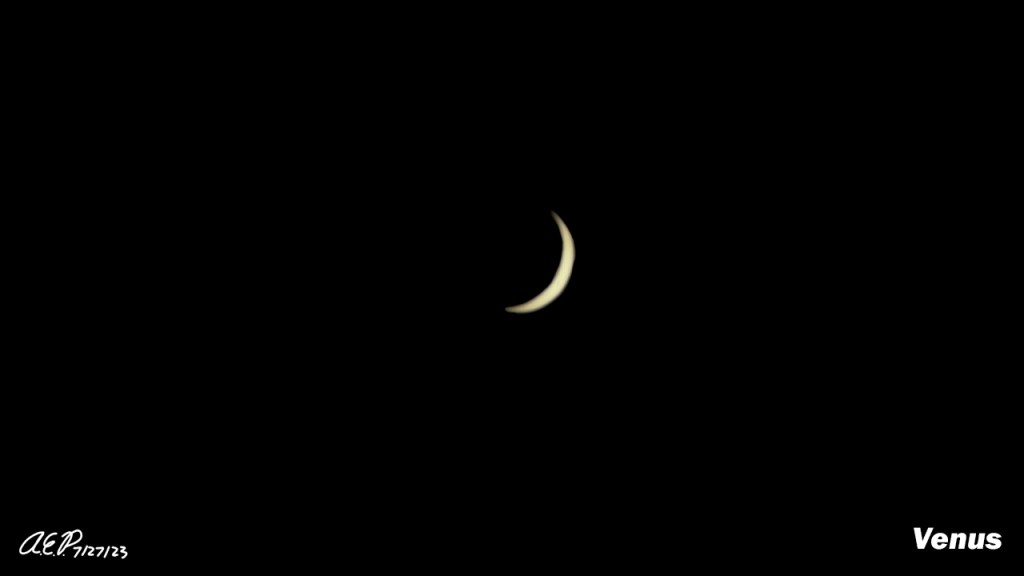
- Mercury and Venus gradually changes appearance with its own phases similar to our own Moon phases – at times it looks like a small full white circle, and other times it looks like a thin crescent with most of the disc in shadow, yet its angular size is significantly larger (because it’s closer to earth!).
- Mars can appear as small as Uranus does, or larger than Saturn’s disc depending on its distance from Earth.
- Mars’ surface features can be easily seen when it’s closer, including ice caps and darker regions that shift over time.


- When at opposition, Mars appears as a full circle, but appears as a semi-circle (or gibbous) with the rest partially in shadow when it isn’t.
These are all observable and repeatable evidences you can see with a telescope! Because you can see shadows on these planets in some form or another, that means these planets are REFLECTING light, not generating! You cannot cast visible shadows on sources generating light!
Sorry to burst your bubble but PLANETS ARE NOT STARS OR LUMINARIES!
Telescope Navigation As We Know It Wouldn’t Work On a Flat Earth!
Anyone can get a telescope that is designed to move with the motion of the sky, especially computerized telescopes. But for computer telescopes on an alt-az mount, you still need to enter your exact coordinate location, your time, your time zone, your date, and perform alignments with up to 3 stars for these devices to work properly.
An equatorial telescope on the other hand relies on the celestial coordinates, so I can still find things with it even without the use of a computer!
As a northern hemisphere observer, contrary to what many flat earthers think, I don’t just point my telescope tube to Polaris and visually observe it to determine if I’m aligned with the celestial coordinates. I actually align my MOUNT to where the North Celestial Pole is, which you can see in the image below.
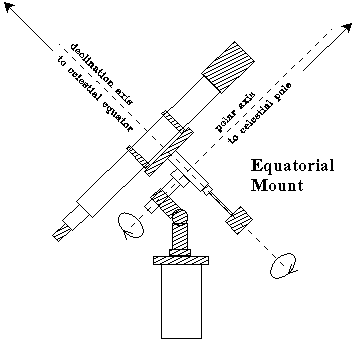
It has to be near perfect, otherwise the setting circles or dials won’t be accurate at all. What about the Southern Hemisphere? The MOUNT has to be as closely aligned with the South Celestial Pole as much as possible. I cannot align with Polaris or the North Celestial Pole from the Southern Hemisphere!
When it comes to the coordinates, the sky has two celestial poles and an equator. The celestial equivalent of latitude is what we call Declination while longitude is Right Ascension.
0° Declination represents the celestial equator, and both sides have two celestial hemispheres with coordinates that reach up to 90° on either side. Therefore DEC +90° is the NCP, while DEC -90° is the SCP.
One degree is 60 arc minutes (‘) and one arc minute is 60 arc-seconds (“).
Polaris current DEC position in the sky for 2020 is +89°20’58” – again, not perfectly sitting at the NCP. Thanks to the precession, by it’ll gradually shift closer to the NCP by 12 arc minutes (89°32’58”) before shifting away again after the year 2103.
Earth’s Right Ascension is divided into 24 “wedges”, each 15° apart, and they are both measured and said in hours and minutes – while initially sounding confusing, this is meant to reference the 15° per hour/ 0.25° per minute/ 0.00416667° per second motion of everything in the sky… which is pretty slow and not immediately noticeable at first glance with the naked eye.
The way the coordinates are designed practically showcases a perfectly 360° three dimensional celestial sky!
Declination: (90°+90°)2 = 360°
Right Ascension: 15° x 24 = 360°
See how important basic math is?!
Oh, and if any star’s declination plus your latitude is greater than 90, then the star is circumpolar.
For example, the star Capella, with a DEC of +46° will never set below the horizon from locations north of 45° Latitude (45 + 46 = 91, 91 > 90). But for locations south of the 45th parallel like Los Angeles (34° N), it is not circumpolar (34+46=80, 80<90).
In the southern hemisphere, it’s with negative numbers, and must be less than (-90) to be circumpolar. So a star like Alpha Centauri, with a DEC of -60° is circumpolar over Santiago, Chile {(-60)+(-33)= -93, (-93)<(-90)}, but not over Rio De Janeiro, Brazil {(-60)+(-22)= (-82), (-82)>(-90)}.
The fact that there are stars above the southern hemisphere that a) are only visible from south of the equator, and b) move clock wise and never set above their southern hemisphere locations when they’re supposed to be always moving from east to west on par with what flat earthers say means that the sky acts like a three dimensional sphere with two poles – not a dome with one!
When you understand how to navigate using these coordinates, it helps you pinpoint exactly where you want to point your telescope and find the object you’re looking for. The long exposure photos that I have taken, plus being able to comfortably view planets at super high magnification just simply wouldn’t be possible without my telescope being designed to compensate for the 0.004° per second movement of any object in the sky along Earth’s Right Ascension. The way they’re designed to operate just isn’t possible under a domed sky with one pole over a flat plane.
TL;DR – Polaris is NOT stationary, has NOT always been the North Star, and the way astronomers navigate the sky just isn’t possible over a Flat Earth!
Throughout the article, I have purposely left out mentioning Earth’s rotation as the reason for the cause of movement in the sky. This was done to speak at the level of a flat earther who doesn’t believe Earth is rotating.
If you have made it this far, I thank you!
If you want to go over the claims of the stars appearing the same despite the rotation and path through space, go to the following article:
If We’re Moving, then Why are the Stars the Same?!
Why Do the Stars Change with Each Season?
Thank you for reading this article. Please consider donating, or simply sharing if you enjoyed it and want to support my work on this site!
For those who are Christian and might be engaged in this flat earth movement, please check out the following article:
Why Flat Earth is Dangerous to Christians
Support Your Neighborhood Astronomers!
You know where mainstream media sites get their information? From people like us! Support Your Neighborhood Astronomers! Everything is free, but donations help keep the website alive and go towards outreach events!
$1.00



As a fellow astronomer, each one of your arguments is correct – but for me the clincher is the simplicity of gravity, although it might be a bit hard for flat-earthers to comprehend.
Wherever we are positioned on Earth, gravity always pulls us the same way. That should be a clue. Drop a stone and it falls vertically downwards towards the centre of the Earth, the gravitational centre, every time.
Now imagine a flat Earth. This implies a disc or other shaped terrain with a limited thickness. The centre of gravity will be directly below the centre of the disc. Stand there and it will be the only place on Earth where you will stand vertically!
Now, jump on a train and travel outwards from the centre of the disc. As the train travels across the flat Earth, the centre of gravity is left behind and despite the railway tracks being flat, an observer on the train begins to sense it is moving uphill.
Travel far enough and the train will stall. You get out and continue your journey towards the edge of the disc. Eventually you will be climbing what seems like an almost vertical slope as you approach the rim, because the centre of gravity is behind you, not below you. When you drop a stone, it will fall almost sideways!
A secondary argument is that a flat Earth would be too fragile to exist. The gravitational forces on a disc from the Sun and Moon would split it up.
That is why when you, I or anyone else who cares to look through a telescope to observe our astronomical environment, we will see stars and planets which are globes. We gain knowledge by looking around us. We can watch the Sun, planets and moons rotate. That is the natural order of the Universe, because gravity dominates – and to declare that every sizable astronomical object which we see is a sphere but that only the Earth is a flat disc defies any credibility test.
🙄
LikeLiked by 1 person
Absolutely!
We both understand the things at work that keep us on Earth and not flying out into space.
But nearly every flat earther adamantly doesn’t believe in gravity, nor believes in a rotating earth to account for the undeniable observations of celestial sights having an apparent east-west motion of 15 degrees per hour.
That’s why I wrote the article the way I did, to speak at “their level.” Show that the undeniable things we observe with just our naked eyes, or the way our astronomy equipment is designed to work can only be possible on a three dimensional shaped object under a three dimensional sky… if that starts making the flat earther think then we can continue on from there and eventually get to gravity. But if they just continue to say “it’s all perspective” then there’s nothing else to say…
But everyone is different. For me the stars are my “ace in the hole” and believe me, has left such flat earthers at a loss for words when they try to debate me about Polaris and the stars at the observatory.
LikeLiked by 1 person
A fellow “Globehead” and FB friend posted a link to your awesome site. I’m a semi pro photag and am a half decent miwlky way shooter. My question is about the star trails image with them rotating in opposite directions… doesn’t that need to shot near the Equator. You have a desert SW arch as the foreground, so I suspect the image is a composite. Lemme know. I’m PNW based and hope to hit the SW for a bunch of astro shooting! Shoot me an email!
LikeLike
Hi Roger,
Nice to connect with you! In terms of that picture with the NCP low in the sky, yes that would have to be taken near the equator. I myself didn’t take it but “borrowed” it to emphasize the star trails and their opposite directions in the sky.
Always feel free to email me : obastronomy@gmail.com or DM me on any of the social media sites to contact me if you have any further questions.
LikeLike
I found the photograher, and sent him a message on his FB biz page. I think it’s a single image, shot with a 360* camera. He notes that is what he used. I hope he responds. It’s possible, perhaps, as the Southern Cross is well out of the frame… and the arch and landscape is well above the horizon. Polaris would likely be at least 30 dewgrees above at that latitude, methinx…. My main 3 astro lenses are the Rokinon 8mm full circ fisheye (seldom used) and the 14 f/2.8 and 24 f/1.4. I’ll be learning to stack, and soon will have a tracker.
LikeLiked by 1 person
You are arguing to a model. You believe in your model. The Earth and Sky are not your model. Your ability to “explain” the motion of the stars according to your model does not equate to objective proof. Your thinking is restrained by your education which was the globe / heliocentric model. You presume that your model is true in all respects and you do not explain how for some aspects, your model cannot be true. For example, IF the Earth was spinning weaving planet in constant motion through space we would NOT observe perfect concentric star trails. Every six months the Earth would be on the opposite side of the Sun on its orbit and the sky view would be different for an observer on Earth. There is no evidence that the Earth is an object in motion – no evidence of axial rotation or orbital motion. The belief in these things is inferred from the model and not established in true science. In short, star motion is not and cannot be a proof that the Earth is a sphere in space. To reiterate, this is a common taught belief based on presumptive logic and reasoning and argued from a model.
LikeLike
And you are merely regurgitating the same points I’ve heard a lot by people like you.
“you are arguing a model”
I don’t believe in a model, I can’t believe in something that’s scientifically correct, I accept it. And when it comes to the heliocentric “model,” at least it’s universally agreed upon in the scientific community, and something that predictions and experiments can be successfully made with. Flat earthers do NOT have a working model they agree upon, nor can they make successful predictions – Once you can make predictions that are undeniably verified based on a flat earth model, then we can talk.
“your ability to ‘explain’ the motion of the stars… does not equate to objective proof”
Except it totally does, because these are all simple observations you can go and do yourself, and make predictions on; or when it comes to things like precession – observations that have been recorded for hundreds of years that help paint the proofs of the stars above shifting their positions over time. I’m sorry that some observable and recorded celestial phenomena don’t conform to your lifespan or your attention span, it doesn’t make them fake.
“If the earth was a spinning weaving planet in constant motion through space we would not observe perfect concentric star trails, and every six months the earth would be on the opposite side of the sun on its orbit and the sky view would be different for an observer”
So you’re saying that in six months we’d see a different set of stars in the sky due to earth’s orbit around the sun? Guess what, WE DO! There’s a reason why in December we see winter constellations like Orion, Taurus, Gemini, etc… while in June we see summer constellations like Scorpius and Sagittarius… for example, Scorpius always appears to rise just as Orion sets and vice versa, and you’ll never see the two respective constellations visible in the sky on any given night. The reason is simple, in December, Earth’s night side is facing towards the winter constellations while the Sun blocks our view of the summer constellations, and vice versa. Don’t believe me? Why don’t you make a note of what constellations you see tonight and where they are in the sky, and then what you see 3 months from now, and then six months from now… what we see in the sky changes gradually every night, my friend.
I explain these things more in these posts:
“There is no evidence of axial rotation or orbital motion…”
The observations of perfect concentric star trails and celestial poles ARE proof of an axial rotation and polar regions. The fact that there are two, not one, but TWO observable points in the sky where the stars appear to circle around – counterclockwise in the north and clockwise in the south, is proof of a three dimensional sky over a three dimensional sphere.
No evidence of orbital motion? remember what I said about us seeing different stars at night six months from now? Yes, that is evidence!
“your thinking is restrained by your education… you presume that your model is true in all aspects… the belief in these things is inferred from the model and not established in true science.”
No… the observations that I went over in this article are all things that were long established BEFORE heliocentrism came into play, from back when Ptolemy’s celestial sphere over a geocentric earth was the accepted model to explain everything.
Models to explain our place and understanding of the universe constantly change with new information that has been predicted, tested, verified, and repeated. That’s how science works! For example, those who understand the geometry of the solar system can predict solar eclipses and their precise locations down to the exact second from start to finish and tracing its path down to the square mile. Doing it successfully just once means the model used to make the prediction has been undeniably verified, and it’s been proven right every single eclipse!
I don’t presume spherical earth is true, I know it is because I apply it every time I use my equatorial telescopes; because for them to work properly and track with the motion of the sky (earth’s rotation), they require precise geometric alignments with the celestial poles (those axial points of rotation) and celestial coordinates above my location, which are designed with a “celestial sphere” in mind.
LikeLiked by 1 person
I greatly value your article and the knowledge you are sharing as someone who invested their valuable time into such important field of study like astronomy. Not everyone has the same chance/capability, so you offering yours free of charge should be highly appreciated by anyone stumbling across your articles.
The lack of addressing the southern hemisphere’s star movement and the second observable « pole » in the sky around which the stars turn has always annoyed me in all the social media masses-friendly depictions of a « flat » earth model.
While I don’t like Marcus’ antagonistic approach, and found his decision to aggressively make such a weak argument about the seasons very odd, I do carry a personal understanding that any collection of observations might be explainable with more than one model, and that the true scientific method, if performed humbly, will never really prove a reality, only the validity of a model/hypothesis for observable/predictive purposes.
That’s why, rather than come in at each other’s throats, I was hoping I could ask you to kindly entertain a thought and, if you are willing to, put you knowledge and expertise to both criticize and nurture it. I know I would appreciate, and hopefully others that read this as well.
My question to you:
The globe model works with all the point’s you’ve enumerated in your article. The TWO observable centers of rotation for the stars hint to a 3D solution, knocking most popular depictions of the « flat » earth model out of the park.
I once saw a video about a weird cult in florida that was pushing a world model where the earth and sky where all inside a sphere – the earth being on the inside surface of the outer sphere(like the white shell of an egg) and the sky & stars being a floating black sphere in the center(like the egg yolk). Search terms for it are « koreshan hollow earth» if you want to look it up. If you are willing to entertain the idea, and other than problems like the « sky ball » having to be real close to ground for the horizon line to work, from a strictly star mapping and astronomical observation point of view, what issues can you find with this « ball inside hollow ball » model?
Just a footnote: I believe the whole « flat » earth thing took off from and is meant to come from a humble place of introspection from a lot of people going: « hold on, i dont know everything, i dont want knowledge to be prechewed for me, I dont want to trust everything I am told blindly, I have doubts, anyone else?». Unfortunately, all that is being spread now on the subject is just divisive and frankly insultingly stupid.
I believe most just want to get closer to a truth that comes from personal experience; not necessarily agreed on by someone else, but instead heavily worked on and vetted by each individual.
Also, could you point me to an article or tips on how to select a telescope that isn’t just a crappy consumer toy, but that has a computerized mount to lock onto targets after setup for a clear image as you describe? Are there different mount+scope combos available or do they usually come as one?
LikeLike
Thank you for your comment. I did look up what you asked me to search for, and to answer this question,
“what issues would you find with the sky if the earth was hollow and we’re looking in from the ‘shell?”
1. Based on this model of the sun being a local revolving object that moves across the hemispheres, the sun would then appear to change angular size as it gets closer to, and further from the observer after appearing to transit overhead – that’s not what we observe.
2. The phases of the moon would not work at all… especially full moons and lunar eclipses, which are only possible when the moon is completely opposite the sun in the sky… in other words the observer’s vantage point on earth is in between the moon and sun… would not be possible if both objects were in the same direction of the sky.
That’s just two issues.
In terms of finding a telescope, my website has lots of articles on selecting the telescope you desire – the ones with mounts that can track the motion of the stars, or are computerized to find objects and stay with them. At the end of the day it just depends on how much you are willing to spend.
LikeLike
Good golly, but don’t the flatturds get triggered? Their infestions are egregiously irritating…and forever moronic, ridiculous, and just plain stupid.
LikeLike
Oh they do… they’ve popped up on my social media accounts on occasion calling my work fake, and as you can see from the comments in this post and another one I wrote: https://orionbearastronomy.com/2020/06/26/why-flat-earth-is-dangerous-to-christians/
I still get them, and then they get a shellacking from me in response when they try to tell me I’m misinformed.
LikeLike
Sent you a FB friend request….. and posted some pics on your biz page. Hope you don’t mind…
LikeLiked by 1 person
Hi, Anthony. I just got an email notification re your recent blog post and see that We’ve been FB friends for almost two years! I’m shooting more an more astro these days. and am ready to soon buy a smallish tracker. Just need to do more research.. Will prolly need a light one for hiking and one capable of handling light loads but mainly as big as my Canon EF 500 f/4 II!! Just getting into stacking as well. Have actually successfully processed a single 4 second shot: Canon R5, el cheapo EF 85 f/1.8, ISO 10000. It’s great, but I have plenty for stacking… as well as from numerous other astro sessions, many that I also have dark frames taken at the same time and settings.
LikeLiked by 1 person